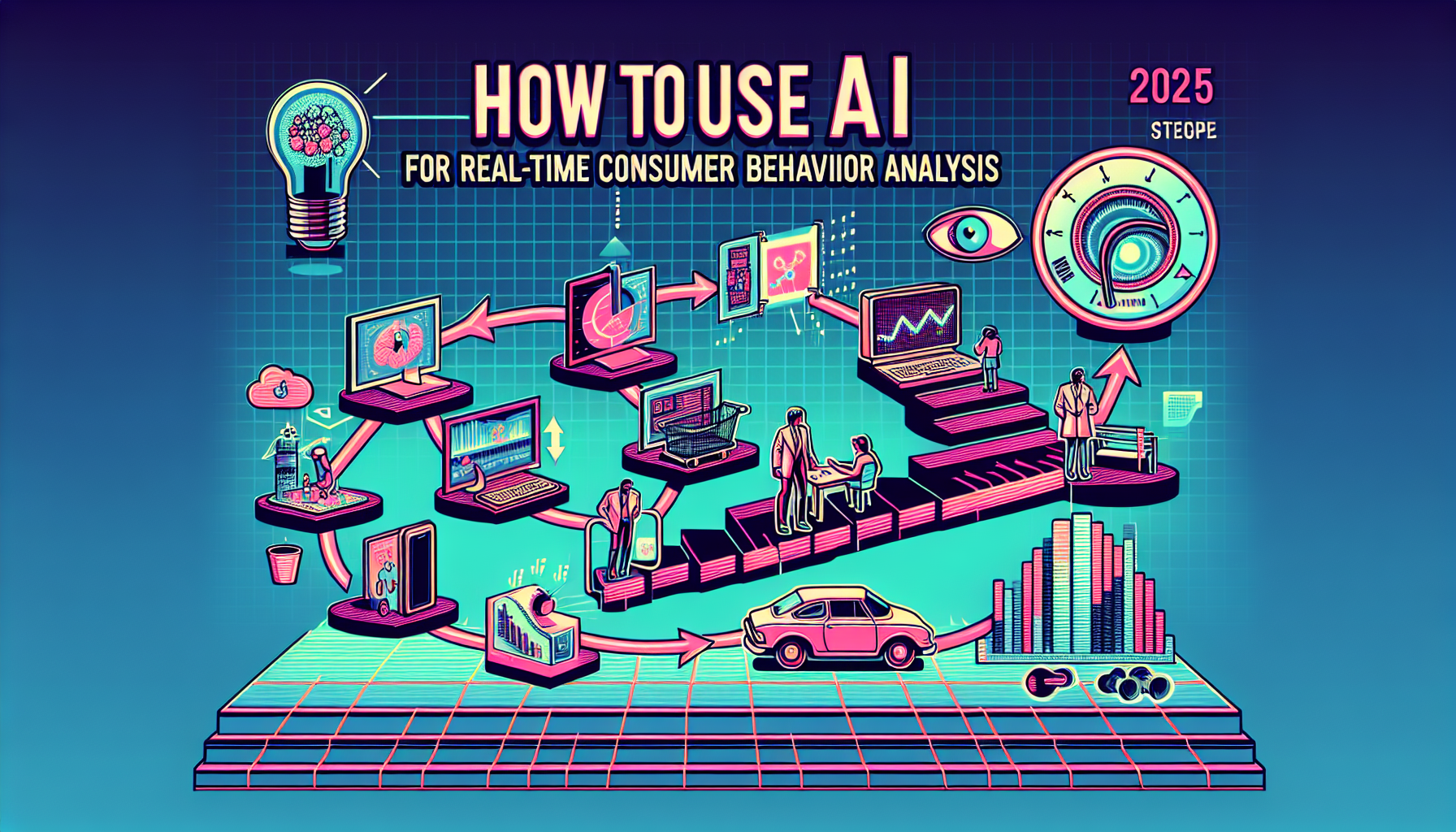Harness AI for Real-Time Consumer Insights in 2025

Discover how AI transforms real-time consumer behavior analysis in 2025. Learn cutting-edge AI tools and techniques that capture and analyze data instantly, providing actionable insights to drive business strategies and enhance customer experiences.
Table of Contents
- Introduction
- Prerequisites/Requirements
- Step-by-Step Instructions
- Common Pitfalls to Avoid
- Advanced Tips
- Conclusion with Next Steps
Introduction
In the evolving landscape of 2025, leveraging Artificial Intelligence (AI) for real-time consumer behavior analysis is not just an advantage but a necessity for businesses looking to stay competitive. This tutorial will guide you through the process of implementing AI-driven analytics to understand and predict consumer behavior as it happens. By the end of this guide, you will learn how to set up, integrate, and effectively use AI tools to analyze consumer data, enabling you to make informed decisions swiftly and accurately.
Prerequisites/Requirements
- Technical Setup: Access to AI software capable of real-time data processing and analytics.
- Data Sources: Setup for collecting data from various consumer interaction points like online platforms, POS systems, and IoT devices.
- Compliance Knowledge: Understanding of data protection laws (e.g., GDPR, CCPA) as applicable in 2025.
- Basic AI Knowledge: Familiarity with AI and machine learning concepts, particularly in data analysis.
- Team Collaboration: Coordination with IT, marketing, and data science teams.
Step-by-Step Instructions
Step 1: Setting Up Your AI Tools
Choosing the right AI tools is crucial. Opt for platforms that support real-time processing like TensorFlow, Apache Kafka, and Microsoft Azure Stream Analytics.
- Select an AI Tool: Evaluate tools based on scalability, support for data diversity, and ease of integration.
- Install and Configure: Follow the tool’s documentation for setup. Ensure the tool is configured to handle real-time input from your data sources.
- Test the Setup: Run a few test cases to ensure everything is working as expected.
Step 2: Integrating Data Sources
Seamless data integration is key to real-time analysis. Ensure all consumer interaction points are integrated into the AI system.
- Identify Data Points: List all potential sources of consumer data including e-commerce systems, social media, and customer feedback channels.
- Develop Integration Points: Use APIs or webhooks for live data feeds into your AI system.
- Ensure Data Quality: Set up filters and checks to maintain data accuracy and relevance.
Step 3: Configuring AI Models
AI models need to be tailored to specific business needs and data types.
- Choose the Right Model: Decide between pre-built models or developing custom models based on your specific requirements.
- Train Your Models: Use historical data to train your models. This step is crucial for accuracy in predictions.
- Continuously Update Models: Set up a system for periodic retraining of models to adapt to new consumer behaviors and trends.
Step 4: Real-Time Analysis and Reporting
Real-time analysis allows businesses to act quickly based on the latest consumer data.
- Monitor Data Streams: Use dashboard tools like Power BI or Tableau for real-time monitoring and insights.
- Set Alert Systems: Configure alerts for unusual patterns or important consumer actions.
- Generate Reports: Automate report generation for regular updates to stakeholders.
Common Pitfalls to Avoid
- Data Overload: Avoid collecting unnecessary data which can complicate analysis and slow down processes.
- Ignoring Data Privacy: Always comply with international and local data regulations to avoid legal issues.
- Over-reliance on Automation: Keep a balance between automated processes and human oversight to ensure accuracy and accountability.
Advanced Tips
- Use AI for Predictive Analytics: Go beyond real-time analysis by using predictive models to forecast future trends based on current data.
- Integrate with Augmented Reality (AR): Use AR to enhance customer experiences based on real-time behaviors detected by AI.
- Continuous Learning: Regularly update your skills and knowledge on new AI advancements and data analytics trends to keep your processes up-to-date.
Conclusion with Next Steps
Having integrated AI for real-time consumer behavior analysis, your next steps should focus on refining these processes and exploring new ways to leverage this technology for business growth. Continue to monitor AI trends and advancements, reassess your tools and methods periodically, and always strive for improvements in data accuracy and operational efficiency. With AI, the potential to enhance understanding of consumer behavior and drive successful marketing strategies is boundless, and staying ahead in this dynamic field will provide your business with substantial competitive advantages.
Frequently Asked Questions
What data is essential for AI-driven consumer behavior analysis in 2025?
In 2025, essential data for AI-driven consumer behavior analysis includes transactional data, browsing behavior, social media interactions, location data, and IoT device data. Integrating these data points helps in creating comprehensive consumer profiles and predictive models for more accurate behavior forecasting.
How can AI models improve real-time consumer behavior analysis?
AI models can improve real-time consumer behavior analysis by enabling faster data processing, providing predictive insights, and personalizing user experiences. These models leverage machine learning algorithms to detect patterns and predict future behavior, thus allowing businesses to make proactive decisions.
What are the challenges of using AI for consumer behavior analysis in 2025?
The challenges include handling large volumes of data, ensuring data privacy and security, dealing with biased data, and the need for continuous model updates. Additionally, integrating AI into existing systems and ensuring compliance with evolving regulations are significant challenges that organizations may face in 2025.
How can businesses effectively use AI to analyze consumer behavior?
Businesses can effectively use AI by collecting diverse data sets, employing advanced analytics models, and continuously training these models with new data. It is also crucial to integrate AI insights into decision-making processes and ensure that all stakeholders have access to these insights to drive consumer-centric strategies.
Sources and References
- MDN Web Docs - Comprehensive web development documentation
- Stack Overflow - Programming community and solutions
- GitHub - Code repositories and open source projects
- W3C Standards - Web standards and best practices
